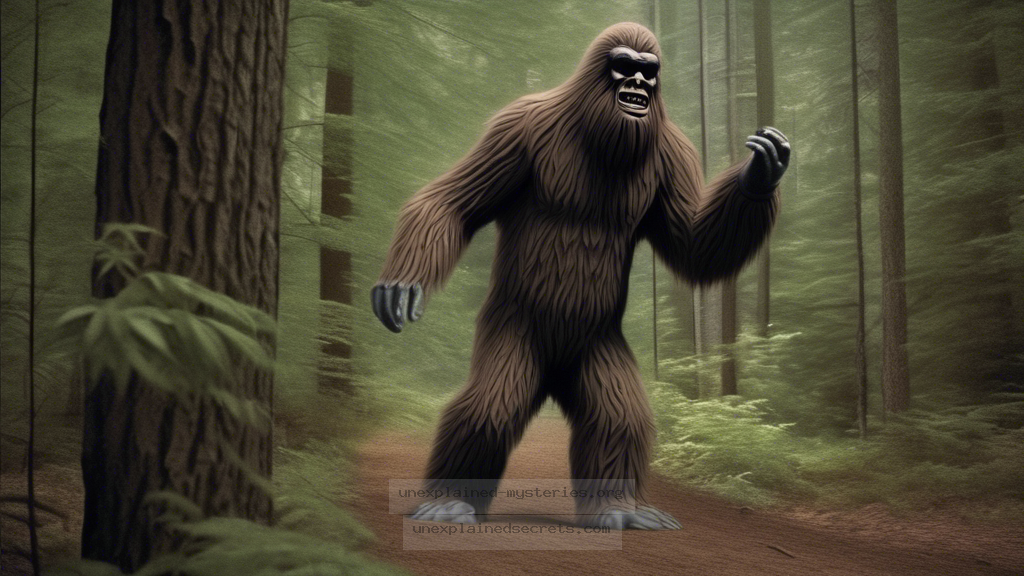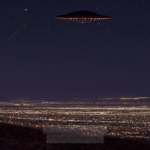What Really Happened During the Patterson-Gimlin Film Encounter with Bigfoot?
What Really Happened During the Patterson-Gimlin Film Encounter with Bigfoot?
The Patterson-Gimlin film, shot in 1967, remains one of the most debated pieces of evidence in the search for Bigfoot. This grainy footage showing a large, hairy creature walking through the woods has captivated cryptozoologists, scientists, and the general public alike for decades. The question of whether this footage is genuine or a hoax is not just a matter of curiosity; it touches on the broader implications of belief, evidence, and the nature of cryptids themselves. This exploration will dive deep into the details of the film, examine the historical context, analyze core theories surrounding its authenticity, and discuss the ongoing impact it has had on the field of cryptozoology.
The Historical Context of the Patterson-Gimlin Film
The Patterson-Gimlin film was recorded on October 20, 1967, in Bluff Creek, California, and features a figure that has been widely interpreted as a Bigfoot. Roger Patterson and Bob Gimlin, both avid Bigfoot enthusiasts, set out to capture evidence of the creature after hearing reports from local residents. The social climate of the 1960s, characterized by a growing interest in the unexplained and the supernatural, provided fertile ground for such phenomena. The film was released to the public in 1968 and quickly gained traction, sparking numerous debates and investigations.
Core Concepts and Theories Surrounding the Film
The Patterson-Gimlin film presents a variety of theories regarding the nature of the creature captured on film. Some of the core concepts include:
- Genuine Evidence: Many believe the footage shows a real Bigfoot, citing details like the creature’s gait and muscle movement as indicators that it is not a costume.
- Hoax Theory: Critics argue that the film is an elaborate hoax, often pointing to inconsistencies in the creature’s appearance and the ease of creating a convincing costume at that time.
- Misinterpretation: Some suggest that the creature could be a bear or another large animal misidentified due to the angle and framing of the shot.
Analyzing the Footage: What Do Experts Say?
Various experts have weighed in on the Patterson-Gimlin film over the years. Some have conducted frame-by-frame analysis and biomechanical studies to assess the creature’s authenticity. For example, Dr. Jeff Meldrum, a professor of anthropology, has argued that the foot morphology displayed in the film aligns with what we would expect from a large, bipedal primate. He suggests that the footprints found in the area corroborate the film’s evidence.
Conversely, skeptics like Dr. Brian Regal argue that the film can easily be dismissed as a hoax. Regal points to the fact that Patterson’s financial troubles and his subsequent efforts to profit from the film create motives for deception. Such contrasting opinions highlight the ongoing debate within both the scientific and cryptozoological communities.
Practical Implications of the Encounter
The Patterson-Gimlin film has had lasting implications for cryptozoology and the study of Bigfoot. For believers, it serves as a rallying point and a piece of evidence that fuels ongoing expeditions and research. For skeptics, it represents the pitfalls of anecdotal evidence and the dangers of confirmation bias.
Alternative Perspectives on the Film
While the debate continues, some alternative perspectives have emerged. These include:
- Cultural Significance: The film has become a cultural phenomenon, influencing media, literature, and public perception of Bigfoot.
- Evolutionary Implications: Some researchers propose that if Bigfoot exists, it could offer insights into human evolution and the diversity of hominids.
- Psychological Factors: The film also raises questions about the human psyche and our tendency to believe in the unknown, reflecting a deep-seated desire for exploration beyond the known.
Common Misconceptions About the Patterson-Gimlin Film
Several misconceptions surround the Patterson-Gimlin film, which can cloud judgment regarding its authenticity:
- Myth of a Fake Footprint: Many skeptics claim that the footprints found near the filming site were made from a known model. However, researchers have shown that these tracks exhibit features inconsistent with any known animal.
- Costume Quality: Critics often argue that a costume could have been made to replicate the creature. Yet, experts in costume design have acknowledged that the technology available in the 1960s would have made it difficult to create such a realistic representation.
- Misinterpretation of Motion: Some detractors claim that the creature’s movement looks unnatural. However, biomechanics experts argue that the gait is consistent with that of a large, bipedal primate.
Best Practices for Investigating Bigfoot Claims
For those interested in investigating the claims surrounding Bigfoot and the Patterson-Gimlin film, consider the following best practices:
- Critical Thinking: Always approach claims with a critical eye. Evaluate the evidence and consider multiple perspectives.
- Scientific Method: Use a methodical approach to collect data, document findings, and analyze results. This can help establish a more reliable basis for conclusions.
- Community Engagement: Engage with both believers and skeptics. A healthy dialogue can lead to new insights and a more nuanced understanding of the subject.
Future Developments in Bigfoot Research
The field of Bigfoot research continues to evolve, with new technologies offering potential avenues for investigation. Advances in DNA analysis, for instance, allow researchers to extract and analyze genetic material from purported Bigfoot hair or feces. Additionally, the proliferation of smartphone technology has empowered more people to document sightings and share evidence in real-time.
Furthermore, organizations dedicated to the study of cryptids are becoming increasingly scientific in their approach, often collaborating with anthropologists, biologists, and other experts to lend credibility to their findings. This shift towards a more scientific framework may facilitate more productive discussions about the evidence surrounding Bigfoot and lead to breakthroughs in the field.
Conclusion: The Enduring Mystery of the Patterson-Gimlin Film
Despite the passage of time, the Patterson-Gimlin film continues to ignite passion and debate in both the scientific and cryptozoological communities. While skeptics argue against its authenticity, believers defend it as a genuine glimpse into the existence of Bigfoot. Understanding this mystery requires a careful examination of historical context, core theories, and ongoing investigations. Whether one sees the Patterson-Gimlin film as evidence of a hidden reality or a cleverly crafted hoax, it remains a captivating testament to humanity’s enduring fascination with the unknown.
Other Articles
Recent Posts
- What Happened to Flight MH370? The Conspiracy Theories That Still Haunt Us
- What Secrets Lurk Within the Walls of the Infamous Trans-Allegheny Lunatic Asylum?
- What Evidence Supports the Existence of Bigfoot in the Pacific Northwest?
- What Happened to the Indus Valley Civilization? Unraveling the Mysteries of Ancient Urban Life
- Can Telepathy Be Scientifically Proven Through Laboratory Evidence?







